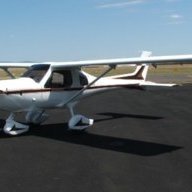Just read of your trials and tribulations, sorry to hear of your misfortune. I have an early SP6, which came with the two seperate fuse halves, part of the fabrication included the bonding of the firewall to the top half. Additionally, I had a landing mishap in 2005 which resulted in extensive damage, repairs included replacement of the front lower fuse as well as the entire firewall. My aircraft was constructed under VH Experimental, so construction and repair was carried out by me, taking advice from my TC and the certifying LAME. Under this category, responsibility for the airworthiness of the aircraft rests wholly with the builder, so Jabiru takes no responsibility for the construction or subsequent repair. I don't know about other categories.
My experience with the company at that time was nothing less than totally positive, very helpful with advice especially regarding splicing layers of the fibreglass components etc, and they were only too happy to send me anything I wanted. As I recall, the total bill for the replacement parts was in the order of $10,000, which I felt was quite reasonable considering the aircraft would otherwise have been regarded as a total write-off.
It seems as though their attitude may have changed, maybe the fear of litigation is more of an issue now. While acknowledging the comments of some of the other contributors, frankly the joining of the firewall to the fuse was not much of a big deal, and I can send you the relevant parts of my construction manual as well as photos of the repairs carried out in 2005 if you like. Certainly you will need to take a lot of care with the alignment of the components, although to be honest, my airframe was not all that brilliant in that regard in the first place (especially around the door frames, which were fabricated in the factory). And as noted elsewhere, the C.G will be upset a bit, you may be surprised as to how much additional weight the repair will add!
Needless to say, anything I give you will be in good faith, and no responsibility taken for the results of your repair. It could be that there may be subtle differences between the construction of an SP and a 430. Anyhow, contact me directly if you like.






